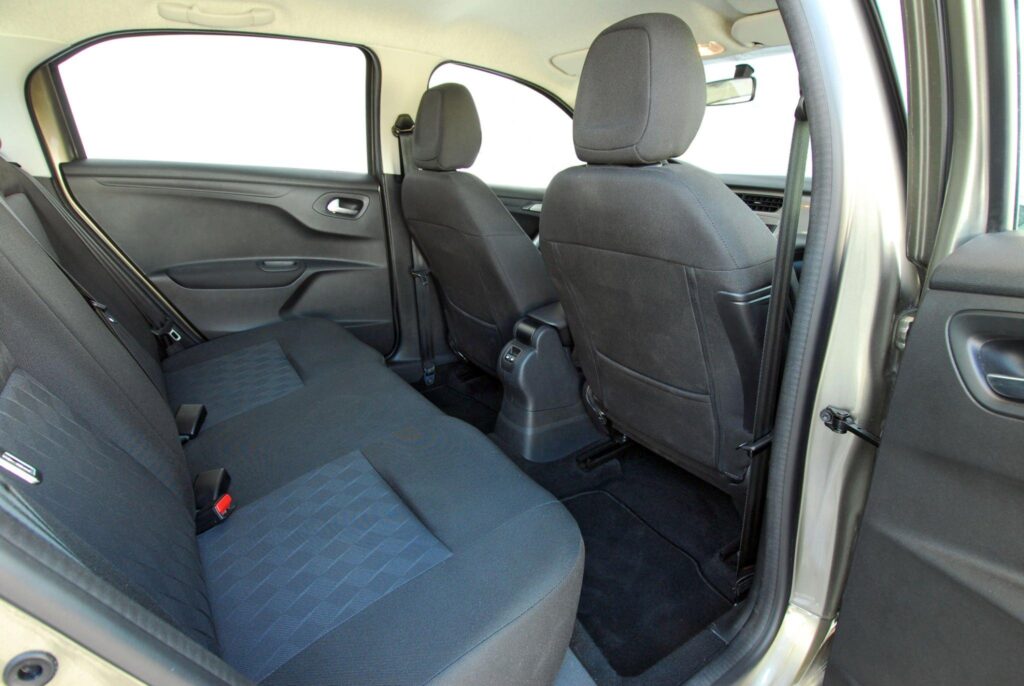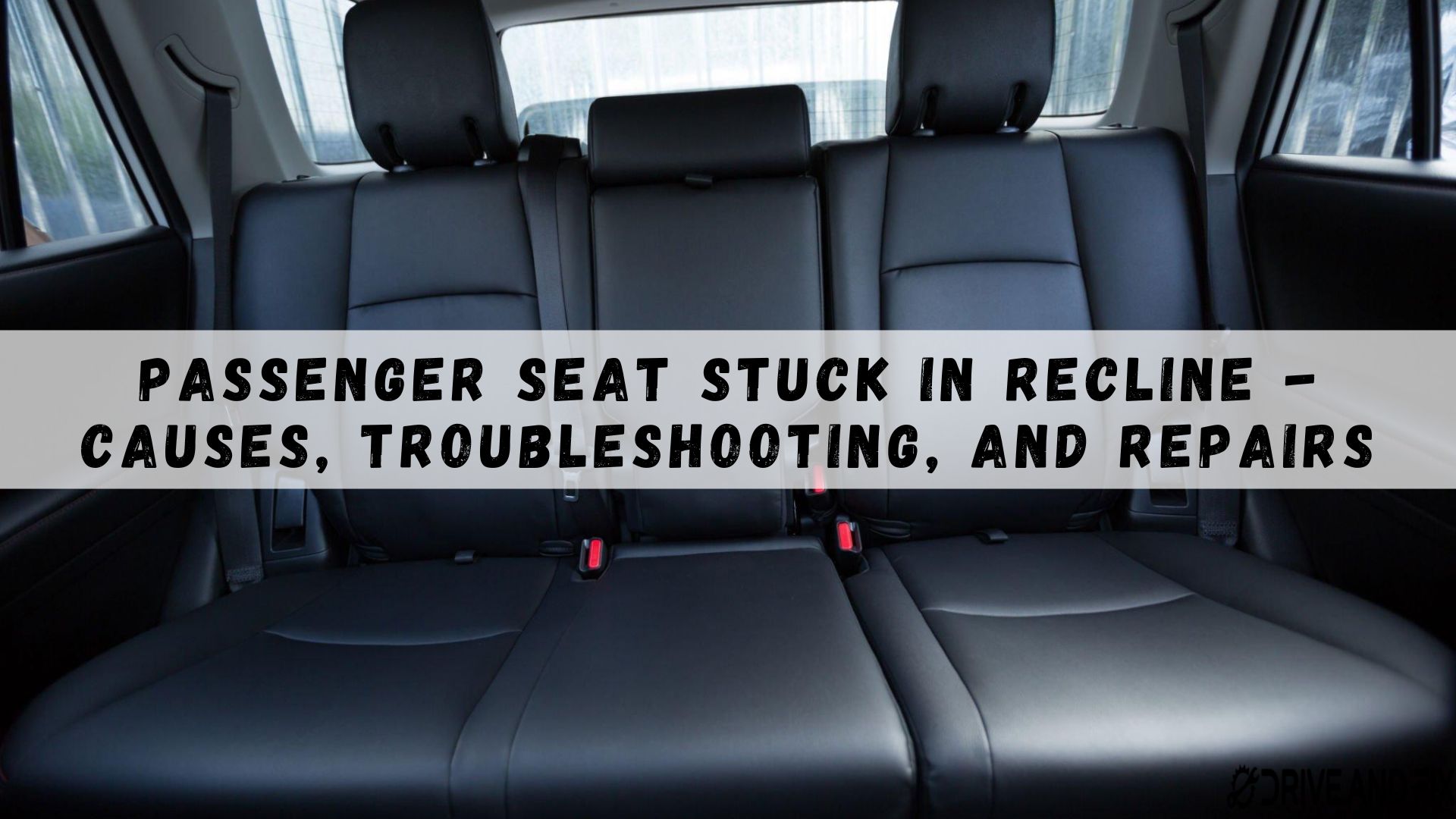A passenger seat stuck in a reclined position is a frustrating and uncomfortable issue to handle. Whether it is a mechanical or electrical issue, it is imperative to address the problem so that you can use the seat comfortably and safely.
Read this write-up as we explore the possible causes of a passenger seat stuck in recline position and provide troubleshooting steps to help you fix the problem. We will discuss when a professional repair may be necessary and the benefits of such a repair. Whether you are a seasoned car owner or a beginner, this article will provide valuable information to help you find a solution.
Why Is Passenger Seat Stuck In Recline – Possible Causes

The Possible reasons for a passenger seat getting stuck in a reclined position can be divided into mechanical and electrical issues.
Mechanical Issue
- Damaged or debris in the mechanism: The mechanism that controls the seat’s recline can become damaged over time, or debris can accumulate in the mechanism, preventing it from working correctly.
- Jammed mechanism: The mechanism can become jammed, preventing it from moving in either direction. This can be caused by applying too much pressure to the seat or a mechanical failure within the mechanism.
Electrical Issue
- Damaged wiring: If the seat has electrical controls, the wiring that powers the controls can become damaged, preventing the seat from moving.
- Disconnected wiring: If the wiring that powers the seat’s electrical controls becomes disconnected, the seat will not be able to move. This can be caused by a loose connection or a problem with the wiring itself.
To determine the cause of the problem, examine the seat, the mechanisms that control its movement, and any electrical components that may be involved.
How To Manually Fix A Car Seat Stuck In Recline Position

Here are the steps to troubleshoot the passenger seat being stuck in a reclined position:
- Check the mechanism: Locate the mechanism that controls the seat’s recline and examine it for any visible damage or debris preventing it from operating properly.
- Apply pressure: Try applying pressure to the seat in the direction you want it to move. If the mechanism has become jammed, applying pressure may help to unstick it.
- Lubricate: If the mechanism seems to be functional, but is still not moving, try lubricating it with a silicone spray or similar product.
- Check the wiring: If the seat has electrical controls, ensure the wiring is not damaged or disconnected. If the wiring is disconnected, you may need to have a professional reconnect it.
If these steps fail to resolve the issue, you may consult a professional technician to repair the seat or replace the mechanism.
You May Also Like: How Much Does It Cost to Change Car Interior Color?
Disadvantages Of Using A Car Seat In Recline Position
- Reduced visibility: When a seat is reclined, the person sitting in it may have reduced visibility through the car’s windows, which can be a safety concern while driving.
- Increased risk of neck and back pain: Reclining the seat too far can put excessive strain on the neck and back, leading to discomfort and pain.
- Reduced stability: Reclining the seat too far can also affect the seat’s strength and increase the risk of injury in the event of a crash.
- Interference with safety features: Reclining the seat too far can also interfere with the proper functioning of safety features such as the seat belt, which may not provide adequate protection in the event of a crash.
- Decreased comfort for other passengers: When one seat is reclined, it can also affect the comfort of passengers sitting behind it, especially if the seat is reclined too far.
Consider these cons when adjusting the recline of a passenger seat and follow the manufacturer’s guidelines and instructions to ensure the safety and comfort of all passengers.
When To Seek Professional Help
If the troubleshooting steps outlined above do not resolve the issue, a professional may need to repair the seat or replace the mechanism. This is necessary if the mechanism is damaged or beyond repair or if an electrical issue cannot be resolved through simple troubleshooting. In some cases, having a professional repair the seat may also be necessary if you are not comfortable performing the repair yourself.
Professional repair offers several benefits, including access to specialized tools and expertise, a warranty, and the peace of mind of knowing the repair has been performed correctly. Also, a professional repair can often resolve the issue more quickly than attempting the repair yourself, which can save time and reduce stress. Ultimately, a professional repair can ensure the seat’s safety and help prevent further problems from occurring in the future.
Final Thoughts
A passenger seat stuck in recline position can be caused by either a mechanical or electrical issue. To resolve the issue, check the mechanism and apply pressure to the seat, lubricate the mechanism, and check the wiring to see if the seat has electrical controls.
Fixing this can be a frustrating but ultimately rewarding experience. By understanding the possible causes of the issue and taking the appropriate troubleshooting steps, you can get your seat functioning well once again. And if necessary, a professional repair can provide the expertise and tools necessary to get your seat back in working order quickly and safely. Regardless of the method, fixing a passenger seat stuck in a reclined position will help ensure your comfort and safety while driving.
Now, have you ever wondered if replacing your car alternator improves your car’s performance? Let’s explore the possibilities together and find out if a new alternator enhances your driving experience. Read on: Will a New Alternator Improve Performance? Explained
Related Articles:


